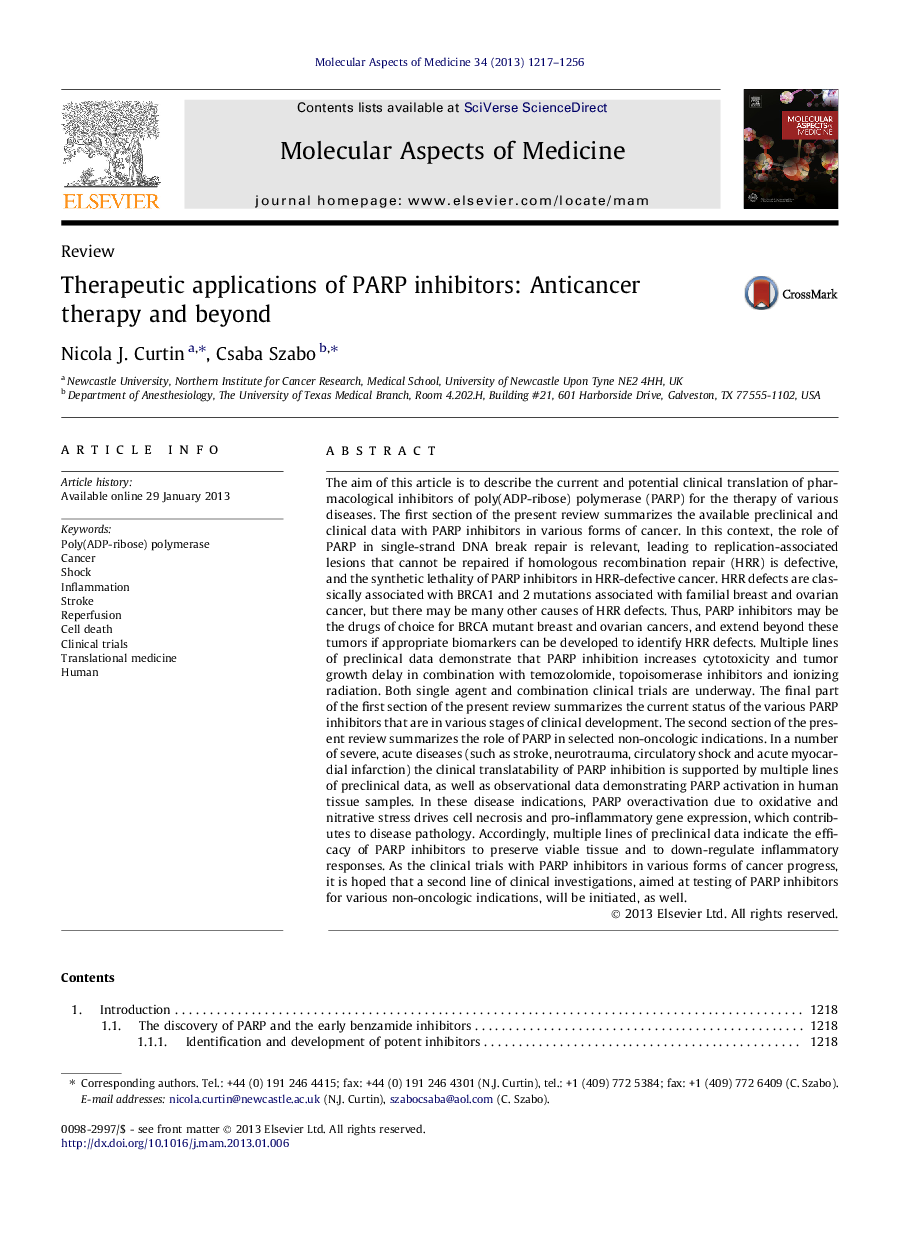| Article ID | Journal | Published Year | Pages | File Type |
|---|---|---|---|---|
| 1995702 | Molecular Aspects of Medicine | 2013 | 40 Pages |
The aim of this article is to describe the current and potential clinical translation of pharmacological inhibitors of poly(ADP-ribose) polymerase (PARP) for the therapy of various diseases. The first section of the present review summarizes the available preclinical and clinical data with PARP inhibitors in various forms of cancer. In this context, the role of PARP in single-strand DNA break repair is relevant, leading to replication-associated lesions that cannot be repaired if homologous recombination repair (HRR) is defective, and the synthetic lethality of PARP inhibitors in HRR-defective cancer. HRR defects are classically associated with BRCA1 and 2 mutations associated with familial breast and ovarian cancer, but there may be many other causes of HRR defects. Thus, PARP inhibitors may be the drugs of choice for BRCA mutant breast and ovarian cancers, and extend beyond these tumors if appropriate biomarkers can be developed to identify HRR defects. Multiple lines of preclinical data demonstrate that PARP inhibition increases cytotoxicity and tumor growth delay in combination with temozolomide, topoisomerase inhibitors and ionizing radiation. Both single agent and combination clinical trials are underway. The final part of the first section of the present review summarizes the current status of the various PARP inhibitors that are in various stages of clinical development. The second section of the present review summarizes the role of PARP in selected non-oncologic indications. In a number of severe, acute diseases (such as stroke, neurotrauma, circulatory shock and acute myocardial infarction) the clinical translatability of PARP inhibition is supported by multiple lines of preclinical data, as well as observational data demonstrating PARP activation in human tissue samples. In these disease indications, PARP overactivation due to oxidative and nitrative stress drives cell necrosis and pro-inflammatory gene expression, which contributes to disease pathology. Accordingly, multiple lines of preclinical data indicate the efficacy of PARP inhibitors to preserve viable tissue and to down-regulate inflammatory responses. As the clinical trials with PARP inhibitors in various forms of cancer progress, it is hoped that a second line of clinical investigations, aimed at testing of PARP inhibitors for various non-oncologic indications, will be initiated, as well.
